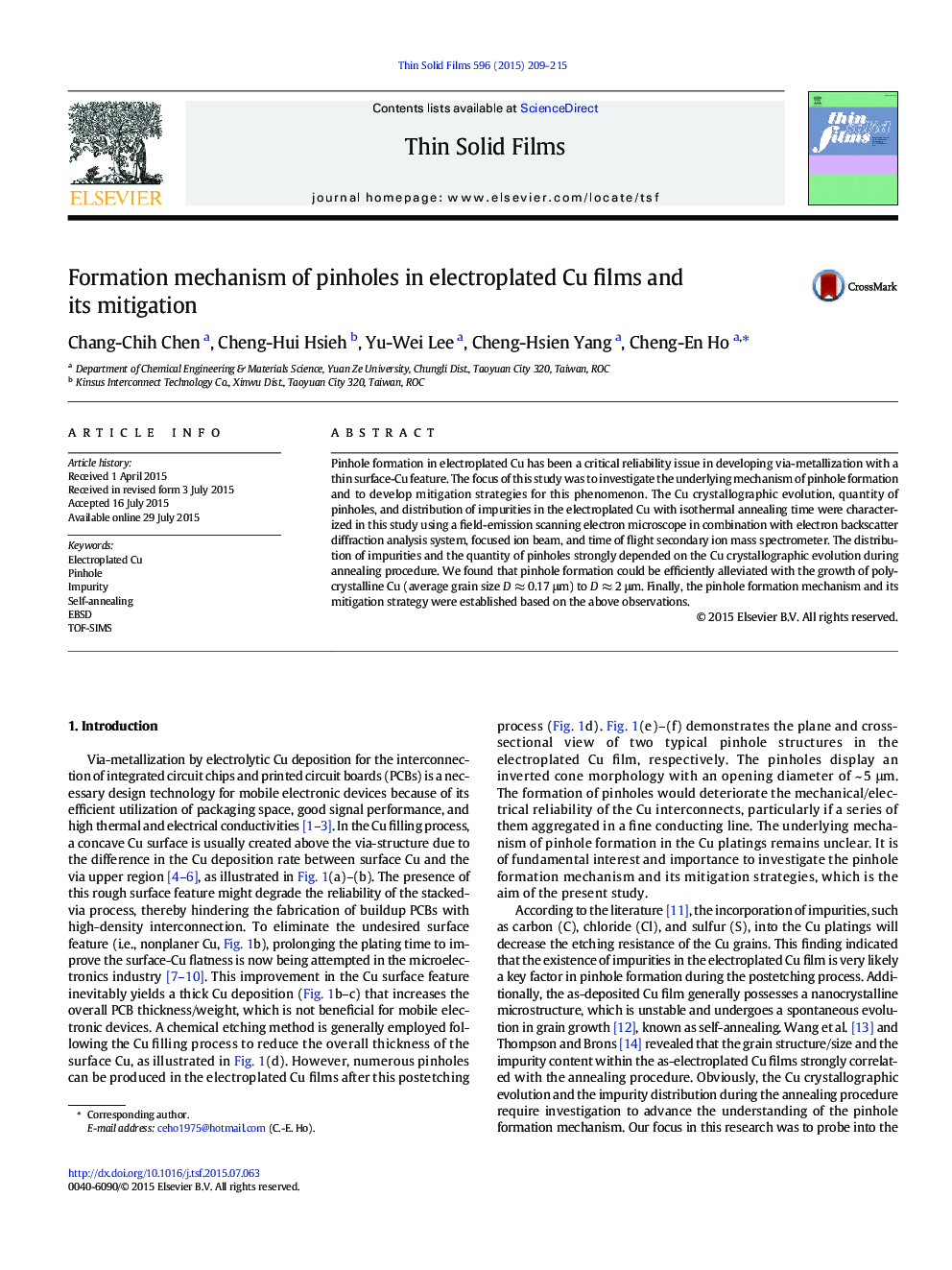| Article ID | Journal | Published Year | Pages | File Type |
|---|---|---|---|---|
| 1664529 | Thin Solid Films | 2015 | 7 Pages |
•Pinhole formation in electroplated Cu films and its mitigation strategies•Crystallographic defects and impurities in Cu correlated with pinhole formation•Transition of polycrystalline Cu into micrograins in annealing and self-annealing•Recrystallization of Cu and impurity redistribution prevented pinhole formation.•Pinhole formation can be greatly alleviated with increasing Cu grain size to ~ 2 μm.
Pinhole formation in electroplated Cu has been a critical reliability issue in developing via-metallization with a thin surface-Cu feature. The focus of this study was to investigate the underlying mechanism of pinhole formation and to develop mitigation strategies for this phenomenon. The Cu crystallographic evolution, quantity of pinholes, and distribution of impurities in the electroplated Cu with isothermal annealing time were characterized in this study using a field-emission scanning electron microscope in combination with electron backscatter diffraction analysis system, focused ion beam, and time of flight secondary ion mass spectrometer. The distribution of impurities and the quantity of pinholes strongly depended on the Cu crystallographic evolution during annealing procedure. We found that pinhole formation could be efficiently alleviated with the growth of polycrystalline Cu (average grain size D ≈ 0.17 μm) to D ≈ 2 μm. Finally, the pinhole formation mechanism and its mitigation strategy were established based on the above observations.
